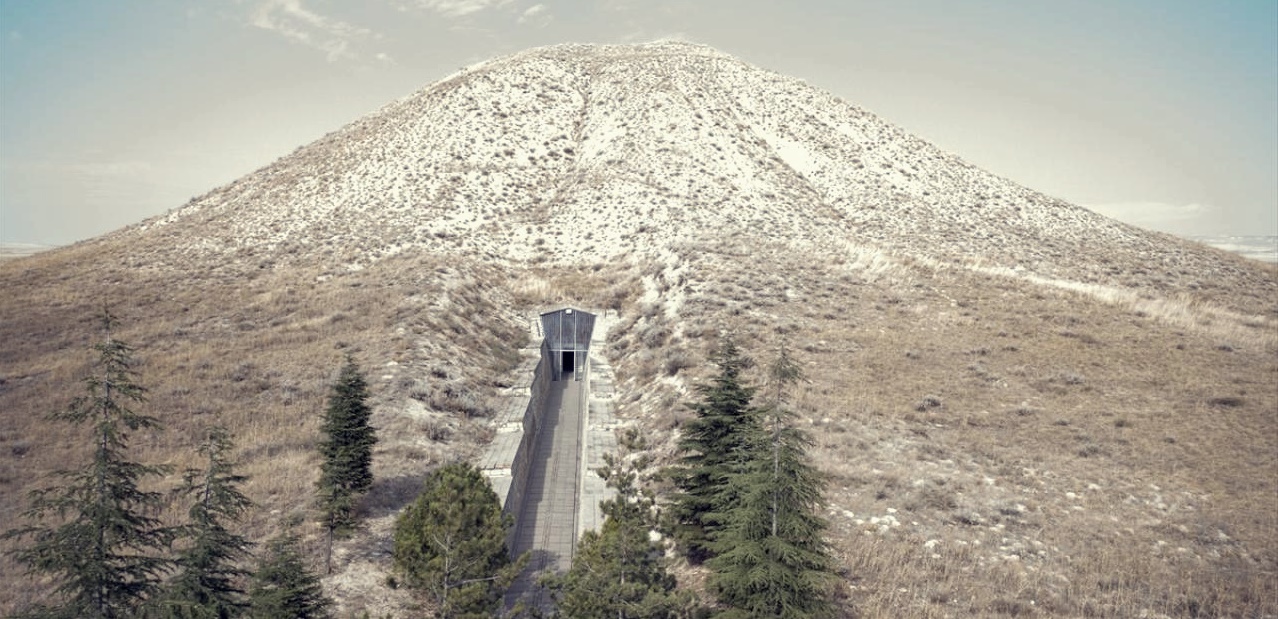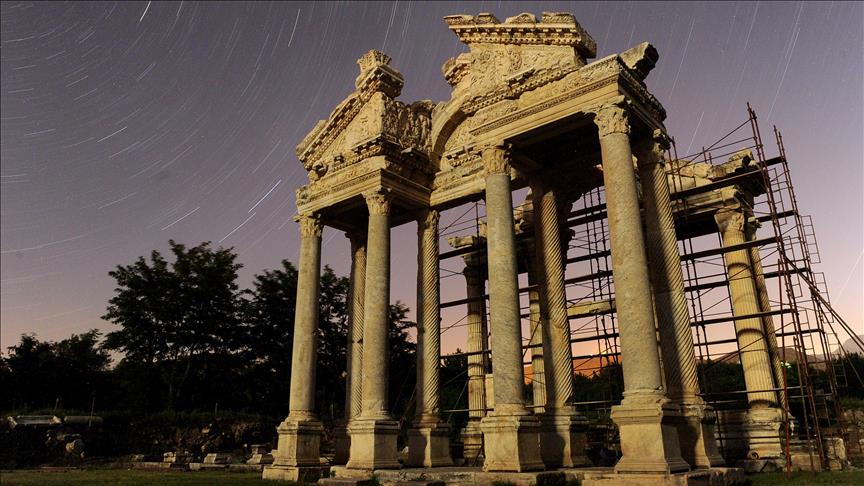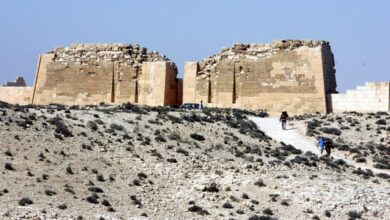UNESCO names 27 new world heritage sites – the list at a glance
The world now has 27 new World Heritage sites. This was decided by the United Nations cultural organization, UNESCO.

Seven of them are in Europe and there is also one German one – and that has a very special meaning.
A total of 1,184 World Heritage sites in 167 countries require special protection by the United Nations. The committee of the UN cultural organization has decided this and has now added 27 new places to the long list of UNESCO World Heritage Sites.
The UNESCO World Heritage Committee is currently meeting in the Saudi Arabian capital Riyadh and is discussing which special natural and cultural sites will be included and what the status of the already listed World Heritage Site is.
What are Unesco World Heritage Sites?
The sites declared World Heritage by UNESCO are cultural monuments, natural sites and places that are both cultural and natural heritage. The list currently includes 1,184 UNESCO World Heritage Sites, but it is updated every year. All places on the list are under the supervision of the United Nations cultural organization. There is also another list that lists all the World Heritage sites that the committee classifies as particularly at risk. There are currently 56 UNESCO World Heritage sites on this list.
Also interesting: Will Venice soon lose its World Heritage status?
7 new UNESCO World Heritage Sites in Europe
New additions this year include 27 cultural and natural sites in Africa, Asia, Europe and North America. TRAVELBOOK briefly introduces the seven new European UNESCO World Heritage Sites. See the full list below.
Denmark: Viking Age ring castles
A new UNESCO World Heritage Site in Europe are the Viking Age ring castles in Denmark, Aggersborg, Fyrkat, Nonnebakken, Trelleborg and Borgring. All five were built between 970 and 980 according to uniform designs. They were used to monitor important land and sea routes on the Jutland peninsula and on the islands of Funen and Zealand. The UNESCO committee describes the ring castles as “important evidence of military architecture from the Viking Age”. The chain is an “outstanding example of the centralization of Viking power under Harald Blauzahn, whose area of influence extended from what is now northern Germany through Denmark to southern Sweden and Norway.”
Germany: Jewish-Medieval Heritage in Erfurt
Germany also has a new World Heritage site, only the second Jewish one on the UNESCO list. Erfurt’s Jewish-medieval heritage was chosen, namely the Old Synagogue, the Stone House and the Mikveh. You can read more about this special UNESCO World Heritage Site here: Erfurt’s Jewish medieval buildings are now a UNESCO World Heritage Site.
France: The Maison Carrée in Nîmes
The Maison Carrée is a well-preserved Roman temple located in the French city of Nîmes. It was created in the 1st century in honor of the heirs of Emperor Augustus, Gaius and Lucius Caesar, who died early. According to UNESCO, “its place in the forum of the former Nemausus (…) testifies to the importance of the new imperial cult in the Roman provinces”. The building itself speaks of “the empire’s claim to lead the Roman Empire into a time of peace, prosperity and stability, the Pax Romana.”
Latvia: Kuldīga/Goldingen in Courland
“Kuldīga is an exceptionally well-preserved example of a traditional Courlandic settlement,” says the UNESCO description. The Latvian city was once called Goldingen and was the seat and administrative center of the first Duke of Courland and Semigallia. Because of its international orientation, numerous foreign merchants and craftsmen settled in the settlement. Their influences as well as local building traditions characterize the “historic urban structure,” as UNESCO writes.
Lithuania: Kaunas of Modernity, Architecture of Optimism, 1919-1939
The Lithuanian city of Kaunas was the country’s capital from 1919 to 1939. UNESCO sees it as an “outstanding example of urbanization and modernization processes (…) that took place in Eastern and Central Europe between the world wars”. In the spirit of post-war optimism, the population of Kaunas pushed forward a rapid transformation of the city “in order to respond to the socio-economic conditions of the time and the increasing importance of Kaunas”. This was done on the basis of an earlier city layout, taking into account the surrounding nature and military fortifications. With the redesigns, the city inspired the modernity of the entire country.
Spain: Prehistoric Sites of Talayotic Menorca
The second largest Balearic island of Menorca is home to numerous dry stone buildings made from large stone blocks. The round houses with pillared roofs and artificial caves date back to the Bronze and Late Iron Ages. According to UNESCO, they are evidence of the so-called cyclopean architecture. “Due to their large number and their exceptionally good state of preservation, the buildings provide information about the region’s prehistoric island cultures,” writes UNESCO. She assumes hierarchical societies, social networks and a religious system of meaning.
Czech Republic: Žatec and the landscape of Saaz hops
In the northwest of the Czech Republic lies this new UNESCO World Heritage Site: Žatec and the Saaz Hop Landscape with the villages of Stekník and Trnovany. The world-renowned hops have been grown here for 700 years, giving Žatec the reputation of “a first-class hop center,” as UNESCO puts it.
These are the 27 new UNESCO World Heritage Sites
Ethiopia: Bale Mountains National Park
Ethiopia: Gedeo Cultural Landscape
Azerbaijan: Cultural landscape of the Khinalig people and “Köç Yolu” transhumance route
China: Cultural landscape of the ancient tea forests of Jingmai Mountain in Pu’er
Denmark: Viking Age ring castles
Germany: Jewish-Medieval Heritage in Erfurt
France: The Maison Carrée in Nîmes
Guatemala: Tak’alik Ab’aj Archaeological Park
India: Sacred ensembles of the Hoysala
India: Santiniketan
Indonesia: The Cosmological Axis of Yogyakarta and Its Historical Landmarks
Iran: The Persian Caravanserai
Cambodia: Koh Ker – Archaeological site of ancient Lingapura or Chok Gargyar
Canada: Tr’ondëk-Klondike Cultural Landscape
Latvia: Kuldīga / Goldingen in Courland
Lithuania: Kaunas of Modernity, Architecture of Optimism, 1919-1939
Martinique (France): Volcanoes and forests of the Pelée and the Pitons in the north of Martinique
Mongolia: Deer Stones and Associated Bronze Age Sites
Palestinian Territories: Ancient Jericho / Tell es-Sultan
Republic of Congo: Odzala-Kokoua forest massif
Russian Federation: Astronomical Observatories of Kazan Federal University
South Korea: Gaya tumuli
Spain: Prehistoric Sites of Talayotic Menorca
Tajikistan, Turkmenistan, Uzbekistan: Silk Roads – Zarafshan-Karakum Corridor
Czech Republic: Žatec and the landscape of Saaz hops
Türkiye: Gordion
Tunisia: Djerba – cultural landscape, evidence of a settlement pattern on an island area
In addition to the new additions, there were four expansions of already listed UNESCO World Heritage sites:
Azerbaijan and Iran: Hyrcanian Forests
Benin: Koutammakou – land of the Batammariba
Madagascar: Andrefana dry forests
Vietnam: Halong Bay and Cát Bà Archipelago



